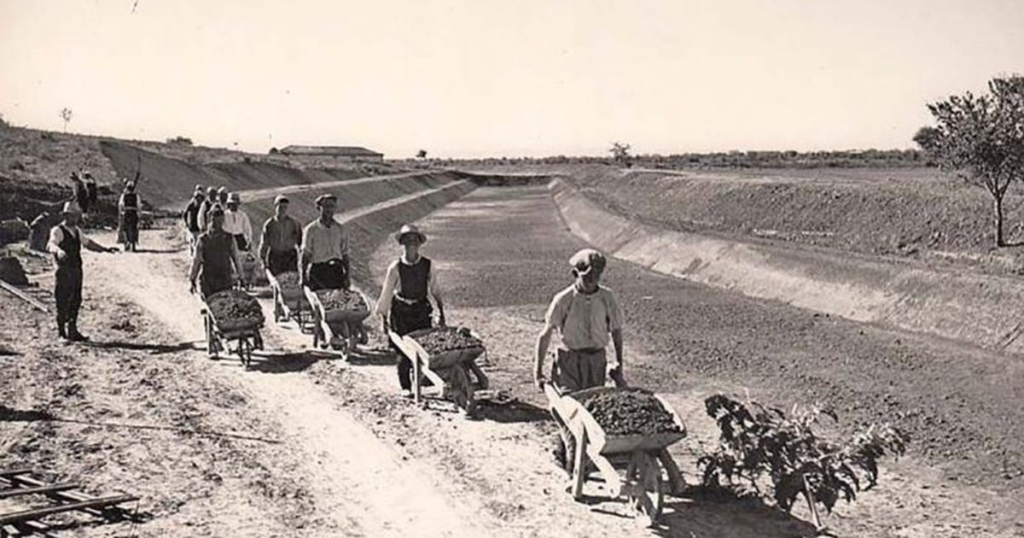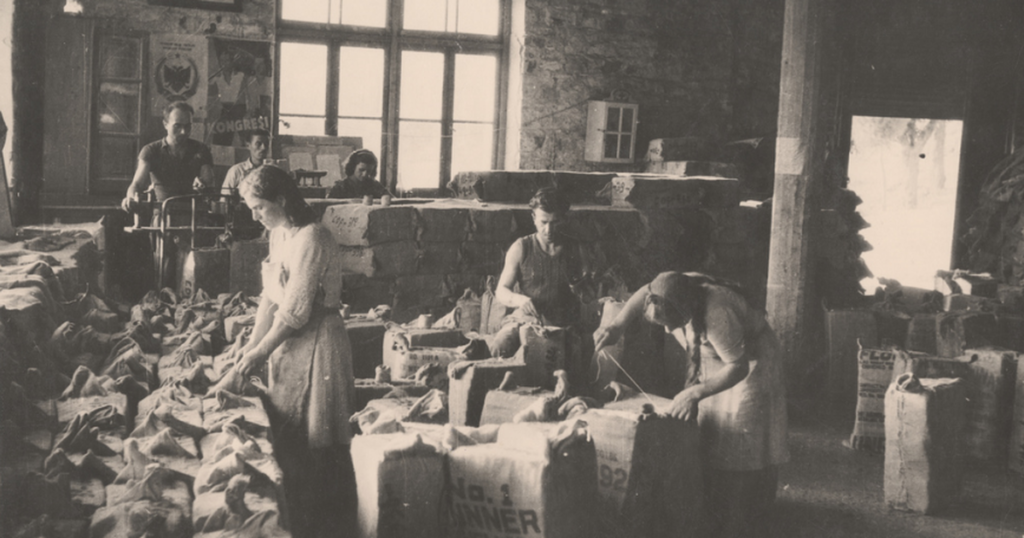
Integral collectivization of agriculture
With the slogan “The land belongs to the one who works”, the first Albanian communist government in the period 1945-1946 undertook, through several stages, a radical agrarian reform for the expropriation of large and medium-sized land owners, including state-owned land , of foreign capital or those owned by religious institutions, and their distribution in favor of poor and landless peasants. But before the distribution of lands was well finished, the Albanian Communist Party announced its basic and long-term platform for agriculture, emphasizing “the need for the socialist transformation of agriculture based on the collectivization of small producers and the creation of large state farms“. The collectivization of agriculture should also serve to apply the theory of centralized planning in agriculture, which was incompatible with the structure of small private and individual producers.

Started with the announcement of the establishment of the first socialist cooperative in 1946, the integral process of de facto cooperatization ended in 1967: cooperatives already occupied 75.8% of agricultural land; state farms 20.7% of it and individual gardens only 3.5% of it. While de juro, this process ended in 1976 with the approval of the new Constitution, which sanctioned the elimination of private ownership of land and its transformation into state property. According to the Constitution, all agricultural land, production organization, trade and means of production were all structured and administered in agricultural cooperatives and state farms.

In 1979, there were no individual private farms in Albania. During this period, Albanian agriculture and agro-food production achieved some valuable indicators in the field of yields and production levels, the level of mechanization, chemicalization and the high degree of irrigation, transportation and processing of agro-food products, forms of organization and management, the introduction of new lands under cultivation, etc. But the deepening of centralizing policies, the degeneration of the situation in cooperatives and state farms, the search for ” new and original ways“, in the name of the defense of the doctrine by the leaders of the Albanian state, such as the creation of “high-type cooperatives”, the system of herds and spices, etc., led to the collapse of Albanian agro-food production and the country to a difficult food situation, made concrete by the establishment of the food stamp system for a significant part of the Albanian population.
Successes and failures in the industrialization of the country
The Albanian communists, who would determine the course of the country for the next 45 years, coming to power in November 1944, declared as their primary objective the transformation of Albania from “an agrarian and semi-feudal country (1945)” towards its transformation “… in an agrarian-industrial country (1955)”… to later move towards an ” industrial-agrarian ” stage, which was expected to consolidate in the 1980s-’90s. According to this scheme of the country’s development, inspired by the strategies and policies of Stalin’s USSR, priority would be given to industry in relation to agriculture, which was anyway considered as “the basic branch of the economy” and within the industry, priority would be heavy industry which constituted the core and main ambition of the country’s “ socialist industrialization ” policy.
The first results of this policy were encouraging and within the period 1950-60, the domestic industry managed to quadruple the production before the Second World War, the extraction of oil and other minerals was developed, a large part of the roads and bridges were reconstructed. , textile and food industry, etc.

In the 1960s, the industry contributed more than 50% to the country’s GDP, and Albania already announced “the realization of the construction of the economic base of socialism “.
Meanwhile, the breakdown of Albania’s relations with the USSR and its “de facto” exit from the socialist camp after the 1960s greatly re-dimensioned its industrialization ambitions and strategy. In the country’s development policies, the concept and practices of ” relying only on internal forces ” entered more and more . “Increasing the level of economic autonomy, consolidating the socialist system, raising the standard of living and eliminating rural-urban differences, etc.”, constituted the essence of the objectives of economic development in the period 1971-1985.

During this period, the largest works of Albanian industry were built: a steel plant in Elbasan capable of processing over 1 million tons of iron ore and producing about 250,000 tons of iron and steel pipes per year; several hydropower plants mainly on the Drin River, with a capacity of 1.8 billion kWh/year; a large oil refinery, with a refining capacity of 1 million tons of oil per year; development of the mining and processing industry of chrome, iron-nickel and copper; other factories for the production and processing of chemical fertilizers, bitumen, cement, bricks, etc.; factories of light and processing industry; etc.
But the 80s, as in many other eastern countries with socialist economies, also saw the beginning of a rapid decline in economic growth levels. Albania had already reached the end of the possibilities of the extensive phase and ” new and original paths of development ” experimented by it. Deprived of foreign capitals, which were considered as ” enslavement instruments ” and prohibited by the Constitution, reached the limit of its internal reserves and possibilities and at the same time as a consequence of the effects of errors accumulated in many decisions and essential policy choices of its economy, the economic growth of 5% observed in the 70s was no more than only 1% in the following decade.


